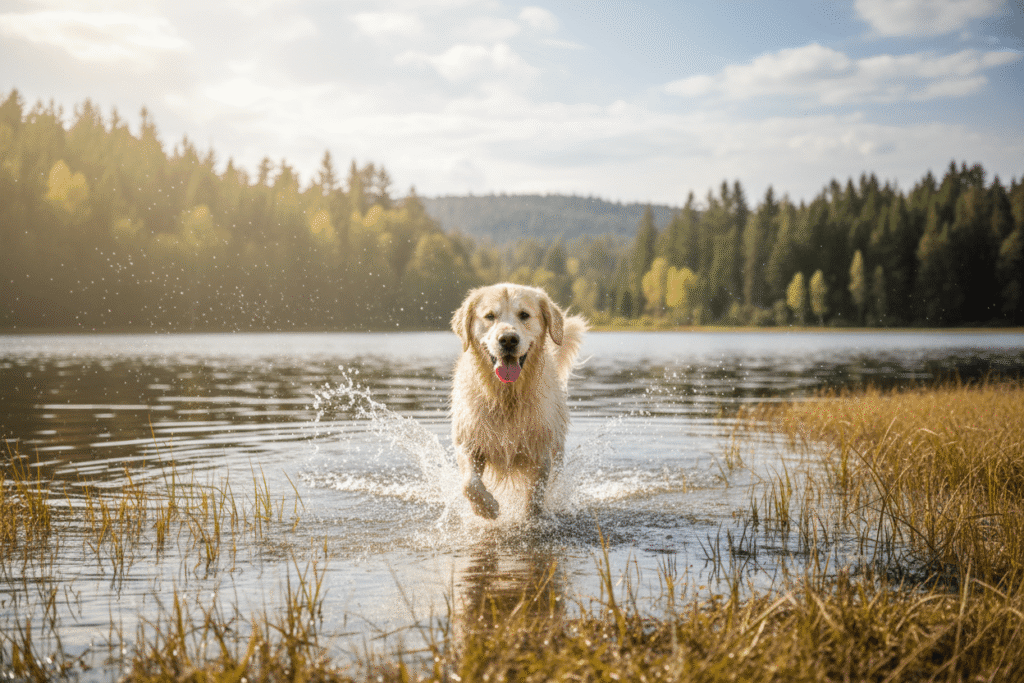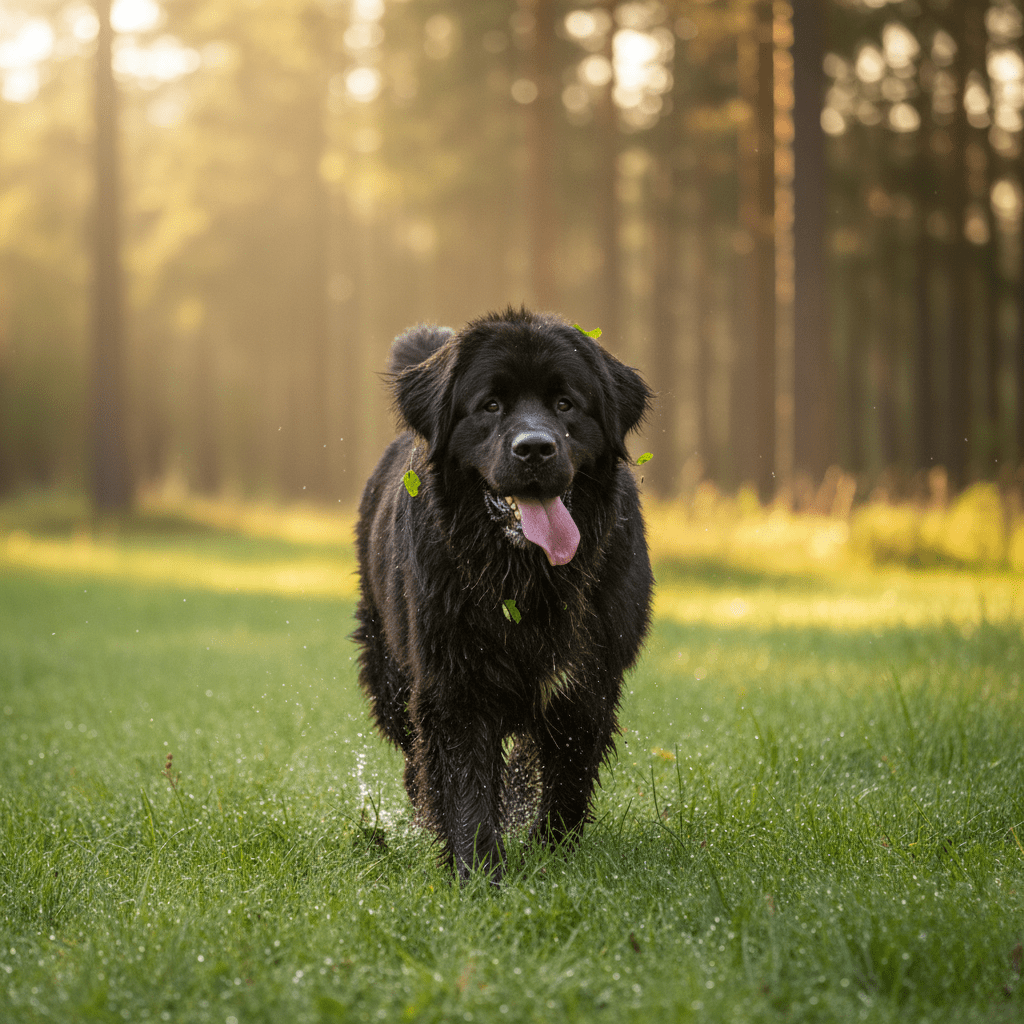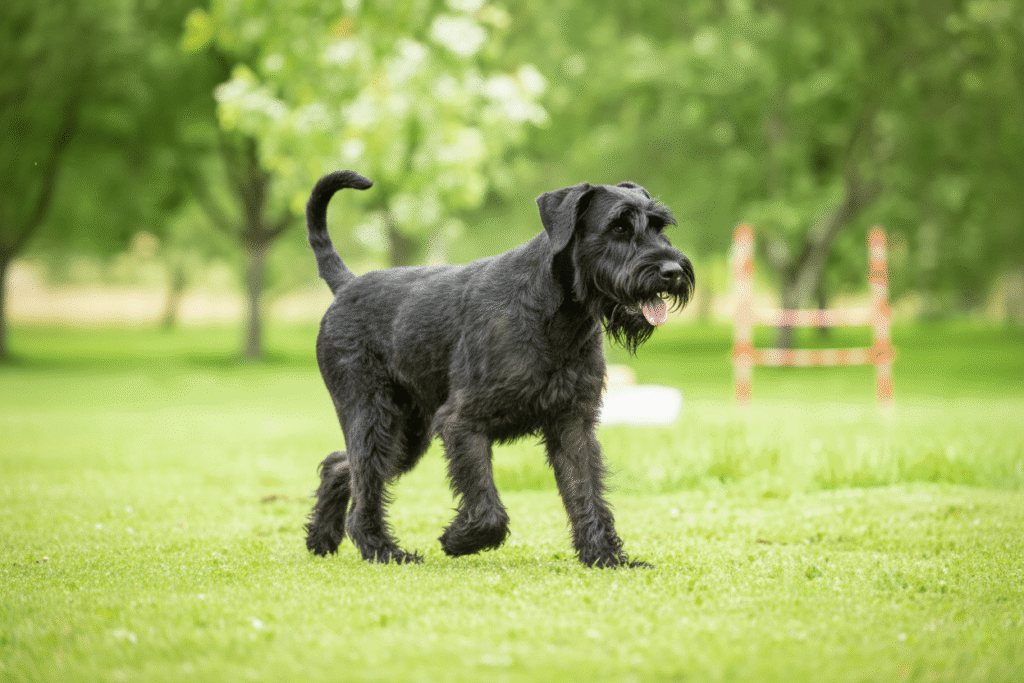Big dogs have a way of grabbing your attention. They’re loyal, full of energy, and always ready to join you, whether you’re going for a walk, spending a day at the park, or heading out for a long weekend outside. In addition, many of these dogs love staying active and enjoy being part of family routines.
However, each breed has its own nature, exercise needs, and care levels. Some stay playful all day, while others prefer a slower rhythm at home. Because of this, their size means you need to consider space, feeding costs, and simple training steps to keep them well-behaved. Breeds like Labradors and Golden Retrievers are known for gentle temperaments, whereas Newfoundlands and Saint Bernards offer calm strength and patience.
Ultimately, with the right choice, a large dog becomes part of your daily life naturally. The key is to find a breed that matches your energy, your home, and the way you spend your time.
Why Choose a Large Dog?
Large dogs bring a strong sense of comfort to a home. They often feel calm and steady, and many people call some of these breeds “gentle giants.” In fact, dogs like these enjoy being part of family life. They like hugs, walks, and simply being near you. For example, if you have children, a big dog can be patient and tolerant while the kids are learning how to behave around pets.
At the same time, large dogs need more space and care. They eat more food each day, and their beds and crates take up room. Because of this, you should plan for these costs. In addition, a big dog needs regular exercise. Without daily walks and play, they may get bored, which can lead to chewing or barking. Therefore, training and social time are very important.
Also, some big breeds are prone to health issues like joint problems or a condition called bloat. These concerns can mean more vet visits and careful feeding plans. To manage this, it’s essential to understand their specific health needs and provide the right diet and care to support growth and strong joints.
How to Decide if a Large Dog Suits Your Home
Start by looking at your home and daily routine. For instance, do you have a large yard, or are you near parks for long walks? Even if you live in a small flat, some large breeds can do well as long as they get daily exercise. However, many large dogs thrive better with a garden or access to green space.
Next, consider your family’s routine. Young children need supervision around any dog. Teach them how to approach and touch a dog safely, and make sure they do not wake a sleeping dog. If your family enjoys running, cycling, or hiking, a high-energy breed like a Labrador or German Shepherd may be a good fit. On the other hand, if you want a calmer home environment but still want a big dog, breeds like the Newfoundland or Saint Bernard often enjoy quiet time and gentle walks.
Also, think about the time needed for training and socialising. Large dogs need firm, consistent guidance to walk nicely and behave around visitors. Along with this, consider the costs for food, vet bills, grooming, and larger beds or crates. By planning ahead, you can make sure your large dog fits smoothly into your family life.
Top 12 Large Dog Breeds for Families and Active Lives
Below are 12 breeds often chosen for family life and active homes. Each short note explains the breed’s nature and the type of household it fits. These choices reflect what many owners value in friendly, steady, and energetic dogs.
1. Labrador Retriever

Labradors are friendly, eager to please, and active. They love swimming and long walks, and they usually enjoy any chance to be outdoors. Because of their smart nature, Labs train easily and do well with kids. However, they do need daily exercise and regular grooming. Overall, Labs are a great match for active families who can give them time for play and training.
2. Golden Retriever

Goldens are gentle and patient, and they thrive on being around their families. As a result, they enjoy learning new tasks and staying involved in daily activities. With regular exercise and brushing, they stay healthy and happy. Overall, they’re a great choice for families looking for a loyal and playful companion.
3. German Shepherd

German Shepherds are loyal and smart, and they like having a job to do. Because of this, they need good training and plenty of mental work. In the right home, they fit families who want a dog that can guard, learn tasks, and join in on active days.
4. Bernese Mountain Dog

Berners are calm and loving, and they enjoy relaxed walks and family time. However, their thick coat does need regular grooming. Because of their heavy fur, they do best in cooler climates and with families who want a steady, gentle companion.
5. Newfoundland

Newfoundlands are very gentle around children, and they’re strong swimmers too. Because of their size, they tend to be calm and enjoy spending time near water. However, they do need plenty of space and regular care for their heavy coat.
6. Great Dane

Great Danes are tall and gentle, and they enjoy short walks as well as plenty of family time. While they are often calm indoors, they still need enough space to stand up and stretch out comfortably.
7. Boxer

Boxers are playful and full of energy, and they thrive on active play and consistent training. Because of this, they are a great match for families who love spending time outdoors and staying active.
8. Weimaraner

Weimaraners are high-energy dogs that love to run, so they’re best suited for active people who can go jogging or hiking regularly.
9. Standard Poodle

Poodles are smart and often low-shedding, which makes them a good choice for families with allergy concerns. In particular, Standard Poodles are active, highly trainable, and enjoy being part of family activities
10. Rottweiler

Rottweilers are loyal and protective, so they benefit from firm training and regular social interaction. With the right guidance, they can grow into loving and devoted family dogs.
11. Saint Bernard

Saint Bernards are gentle and move at a slow, relaxed pace. Because of this, they do best in calm homes where they can enjoy plenty of family company.
12. Giant Schnauzer

Giant Schnauzers are smart and strong, so they need regular training, plenty of exercise, and tasks to keep them busy.
For each of these breeds, make sure you learn about their common health needs, feeding habits, and exercise levels. Every breed has its own traits, so knowing these basics helps you choose a dog that fits your home and daily routine.
Training and Social Care for Large Breeds
Training helps large dogs settle into family life, and it’s best to start early. When a puppy learns simple rules, it usually grows into a calm adult. Try giving your dog short daily lessons and regular chances to meet new people and other animals in safe spaces. This way, social time builds confidence and reduces fear or over-reactions as they grow.
Use short, clear commands like “sit,” “stay,” and “come,” and reward good behaviour with treats or praise. Keep sessions brief, five to ten minutes, a few times a day. For big dogs that pull on walks, teach loose-lead walking and consider a front-clip harness if needed. Also, if you plan to jog with your dog, wait until its bones are fully developed; a vet can advise when high-impact exercise is safe.
Large dogs can accidentally knock over small children, so teach kids to respect the dog’s space. At the same time, train your dog to go to a mat or bed on command, giving everyone safe timeouts. For breeds with guarding instincts, early socialisation with many people helps them stay calm and comfortable around visitors.
Exercise Plans for Active Families
Large dogs need exercise to stay healthy, and the amount depends on the breed. For example, active breeds like Labradors, Weimaraners, and German Shepherds need one to two hours of activity each day. This can include a long walk, a run, play in a secure field, or a game of fetch. Meanwhile, calmer large breeds like Saint Bernards may do well with shorter walks and gentle play.
It helps to divide exercise into physical and mental parts. For physical activity, plan one long walk and one shorter walk, or a run plus a play session. For mental work, teach new tricks, hide treats for a scent game, or try puzzle toys. Dogs that work their minds often tire out and behave better at home.
Always match activity to the dog’s age. Puppies need short play sessions, while older dogs may need slower, gentler walks. Keeping track of how much your dog exercises each week can help avoid overwork. Regular activity strengthens joints and keeps weight in check, which lowers the risk of joint problems later.
Health, Nutrition, and Lifespan of Large Breeds
Large dogs can face breed-related health risks. For instance, hip dysplasia, elbow problems, and joint wear appear more often in bigger breeds. Some breeds also face heart issues or bloat, a serious stomach twist that needs immediate vet care. Regular check-ups and early breed screenings can help reduce these risks.
Nutrition plays a big role in keeping large dogs healthy. Puppies, in particular, need food made for large-breed growth. This type of food helps bones grow steadily and supports joint development. It’s important to feed the right amount; overfeeding can cause fast growth and more stress on joints. As adults, large dogs benefit from high-quality food with nutrients like glucosamine to support joints.
Preventive care is key. Keep up with vaccines, worming, flea control, and dental care. Check your dog’s weight regularly, as extra pounds add stress to joints and can shorten an active life. For older dogs, use gentle exercise and consider ramps to help them move up and down stairs safely.
Finally, expect the lifespan of large breeds to be shorter than small breeds. Many large dogs live 8 to 12 years, depending on breed. Knowing health risks and building a care plan with your vet gives your dog the best chances for a long, happy life.
Housing, Travel, and Gear for Large Dogs
Plan your home with a large dog in mind. Start by giving your dog a resting place that fits its size. A crate or bed should let the dog lie down and stretch comfortably. For safety, use baby gates to block stairs or rooms when needed. If you have a tall breed like a Great Dane, check ceiling heights near couches and allow open space for movement.
When you travel by car, use a suitable harness or crate to secure your dog. Large dogs need enough space and safety straps that fit them well. Also, some public transport options have their own rules for dogs, so it’s best to check before your trip. Always pack the basics such as food, a bowl, a leash, treats, and a towel.
Next, choose the right gear. A strong leash and collar, a front-clip harness for dogs that pull, a wide bowl for big eaters, and durable toys all make life easier. For grooming, big dogs with heavy coats need proper tools and time for brushing, while short-coated breeds benefit from a rubber brush and regular baths. Finally, invest in a good bed that supports joints. Orthopedic beds are especially helpful for older dogs.
FAQs
- Which large dog breeds are best for families with young children?
Labs, Golden Retrievers, Bernese Mountain Dogs, and Newfoundlands often show patient, family-friendly temperaments. Always supervise children and teach safe interaction. - Do large dog breeds need special food?
Yes. Large-breed puppies often need large-breed puppy formulas to support steady bone growth. Adult large dogs benefit from diets that support joints and a healthy weight. Ask your vet for specific advice. - Are big dogs harder to train?
Not always. Many large breeds are very smart and eager to please. Start training early, use short sessions, and be consistent. Training keeps everyone safe and calm. - Can large dogs live in apartments?
Some can if you give them enough daily exercise and mental tasks. Breeds with lower energy or good indoor manners fit better. Plan daily walks and off-lead play when possible. - Should I adopt or buy a large dog?
Both options work. Rescues often have adult dogs with known temperaments. Reputable breeders provide health tests and early care. Ask questions and meet the dog before you decide.
Conclusion
Large dog breeds bring big hearts and steady companionship. If you lead an active life, many large breeds happily join runs, hikes, and long walks. For families, some dogs offer patience and calm that fit well with busy days and children. Before choosing a breed, consider your home, daily time for walks and training, and your budget for food and care.
It’s also important to understand the common health needs of large dogs, such as joint care, steady growth, and proper feeding for puppies. Talking with veterinarians, trainers, or breed clubs can help you learn about behavior, exercise needs, and long-term care.
By meeting dogs in person, whether at rescues or breeders, you can see how they interact with your family. Ultimately, a well-matched large dog brings years of play, comfort, and steady friendship. With careful choice, you welcome a dog that fits your life and adds warmth to your home.
